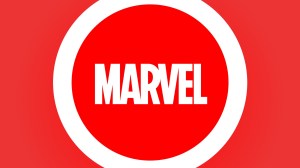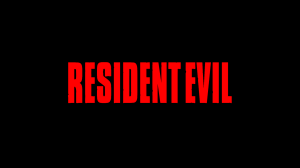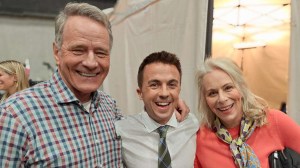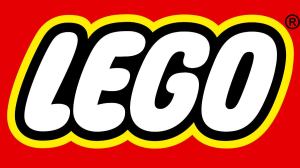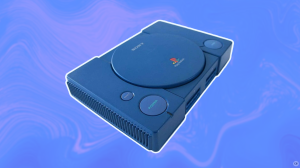My Hero Academia, written and illustrated by Kohei Horikoshi, is the best superhero comic published today. While it doesn’t have the pedigree of Batman or the pop culture appeal of Avengers, the series expertly combines superhero and traditional shonen tropes together while adding a wrinkle missing in most superhero books: a sense of real danger and finality.
Videos by ComicBook.com
Spoilers for My Hero Academia Vol. 11 below. There are also some vague references to events that occur later in the series.
My Hero Academia centers on Izuku Midoriya, a teenager chosen to become the successor to the world’s greatest hero: All Might. The world of My Hero Academia is a superpowered one, in which over 80 percent of the world’s population have special abilities called Quirks. At the start of the series, Midoriya is one of the few who doesn’t have powers, but that all changes after his superhero idol All Might saves him from a random villain attack.
Due to a horrific injury in a past battle, All Might can’t use his powers for an extended period of time, meaning that his time as a top superhero is coming to an end. All Might’s unique ability allows him to pass along his abilities to a successor, and he chooses Midoriya after seeing the boy’s potential for greatness firsthand.
Heroism With Consequences
My Hero Academia is both a classic coming-of-age story and a great superhero series. While the book definitely features some classic shonen manga tropes (one early arc features a fighting tournament; many superheroes have named supermoves), it’s clear that My Hero Academia is just as much influenced by American superhero books. Not only does each chapter feature a classic Western comic cover, one of the main themes of the series is about legacy and the role of superheroes in society.
However, My Hero Academia differs from the superhero comics published by Marvel and DC in a very big way. While Marvel and DC have fallen into a cycle of telling big world-breaking stories and then “resetting the table” and reversing all of those changes, My Hero Academia is very much a linear story, which means that characters can get hurt, they can die, and they don’t ever come back.
A great example of this is Midoriya’s body wasn’t built for his new abilities, and he spends much of the series struggling to control them. Midoriya’s first attempt to use his new superstrength results in him breaking both his legs and his arms. Later injuries are even more horrific — to the point where he suffers permanent scarring and cartilage damage from all the use. In one recent volume, he’s warned that one more horrific injury would result in even more permanent damage, which would lead to him losing the use of his arms.
Now, in a Western superhero story, an injury like the one Midoriya suffers would make for a solid subplot, but one that would eventually get reversed or fixed. In My Hero Academia, Midoriya’s injuries force him to make changes to his fighting style until he gets himself under control.
Big Moments That Push the Story Forward
Because My Hero Academia doesn’t need to balance storytelling with the need to preserve an always-growing universe, it makes the big moments in the series have even more impact on readers. Probably the best instance of this occurred in the latest volume, when All Might permanently lost his powers trying to stop his arch-nemesis: All For One.
Readers had known since the beginning of My Hero Academia that All Might’s time as a superhero was coming to an end. And we had already seen All Might’s abilities wane in an earlier volume when he overexerted himself against a massive villain attack. But that didn’t make his inevitable “end” any more shocking just two years into the series.
All Might lost his powers in a bloody and brutal battle against his arch-enemy, the man who had already crippled him and killed his mentor in a past battle. And while All Might used the last embers of his super-strength to defeat his rival, his shriveled “real” form was revealed to the world, meaning that the entire planet knew that their “symbol of peace” was gone.
While reading through All Might’s final battle, I couldn’t help but compare it to Superman’s iconic battle with Doomsday in the Death of Superman event. The two fights had so much in common: the brutality, the high stakes, and even the sense of self-sacrifice. But My Hero Academia topped that iconic DC story in one regard: the finality of its consequences.
Imagine if DC hadn’t immediately pulled the trigger on resurrecting Superman. Imagine a DC Universe irreversibly altered by his death, where heroes were still grappling with his sacrifice years later and where readers couldn’t help but wonder if their favorite hero would be permanently killed off every time they faced a villain with superior powers. That’s the world Kohei Horikoshi created when he removed My Hero Academia’s biggest hero from the board.
Admittedly, there are some big differences between Death of Superman and All Might’s sacrifice. Superman is DC’s biggest superhero, while All Might is just a supporting character in My Hero Academia. But in the context of My Hero Academia‘s world, Midoriya and his allies just lost their top hero, making the world a much more dangerous place.
Because the English translations are over a year behind the release of Japanese chapters, we know that the characters of My Hero Academia will be reeling from All Might’s sacrifice over a year later. Not only does it fundamentally alter how both heroes and villains behave, it also creates a ripple effect that leads to more big moments… including some big fatalities.
Continuity vs. Finality
One of Marvel and DC’s greatest strengths is continuity, the creation of a rich fabric of stories that stretches back generations. However, a fabric is only useful if its crafted into something. Too often it feels like Marvel and DC are simply spinning their wheels and just publishing comics for the sake of publishing comics instead of encouraging their creators to build on the past and create memorable stories that the next generation can build upon.
Maybe that’s why My Hero Academia is so compelling. Readers get to watch as Horikoshi builds this fantastic and rich world and fret over when he’ll tear it all to pieces. Each chapter seems to be slowly building towards a big finale. It may be years off, but readers already seem to know that there’s an endgame and that it will likely be both tragic and triumphant. My Hero Academia is a comic filled with all the superheroics you love, but with an added sense of unpredictability and danger.


